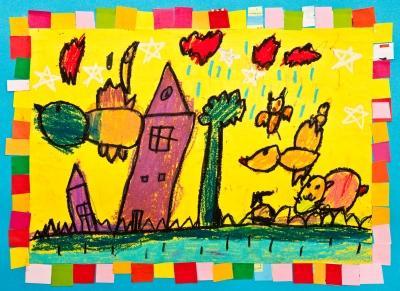
What role do emotions play for children’s learning and their skills to solve problems in a creative way?
Mary Helen Immordino-Yang says that neuroscience can help parents and teachers to understand how children learn best. Studies suggest that the same neural systems are used to feel our bodies and feel our relationships. The same systems are also involved in making moral judgements and creative explorations.
Mary Helen says.
“Survival in the savanna depends on a brain that is wired to make sense of the environment, and to play out the things it notices through patterns of bodily and mental reactions. . . This same brain, the same logic, helps us make sense of and survive in the social world of today.”
To make something relevant to a child, it should inspire an emotional reaction. If a child is interested in a topic, it feels meaningful. Part of his brain is firing and bursting with activity. This part is also involved in looking for inspiring and new ideas. Creativity means to find new ways to represent or solve a problem. These moments are filled with intense activity and may be motivated by a child caring about a topic.
Insights may be the result of a wandering mind and daydreaming is one way that a child can have creative insights by rearranging old information. But when a child learns something new, the real work is carried out while the child engages in some inward focus. Mary Helen says that it is necessary for a child to “disengage” from the world around him to focus on incorporating new knowledge.
If a child has learnt new words, such as planets and galaxy, he can explore those words and express them within something that he already has knowledge about. A song or a poem where space words are used in a familiar setting such as family love. Neuroscience may simply confirm what parents and teachers are already doing. But this gives us confidence that this is a great way to support and engage with children. But it is very difficult to interpret neuroimages and it is difficult to draw conclusion from neuroimages. And the relationship between an image and an activity is not straightforward.
A child may think something and consciously or not, his brain may make adjustments to reflect the emotions that followed from that thought. In a way, a child lives by “gut feelings” that are in agreement with his beliefs, experience, and knowledge.
Mary Helen uses poems that children have written to demonstrate that necessary feeling of creating.
Untitled, age 6 years 2 months.
Oh Teddy we love you mor then the whole rth sis as the rth spins evry day we love you as much as u shewell but sum timse evine mor as you mac us proud and happy tha chyr you!
Oh Teddy we love you more than that whole Earth Size. As the Earth spins every day we love you as much as usual, but sometimes even more, as you make us proud and happy that you’re you!
Mary Helen says that this poem was written as a song, with a melody. The poem shows the interdependence of emotion and disciplinary knowledge in learning.
How does this little girl express the love and pride of her family for her little toddler brother? Well, uses her new knowledge and words of planetary science to describe her love. This poem is both about her love and about understanding of the planet she lives on.
Go here to read more poems and descriptions of how this child uses old and new knowledge to write poems.
Photo:”Painting Of Five Years Old” by Sura Nualpradid
